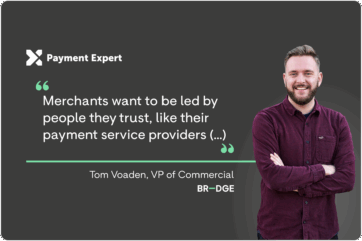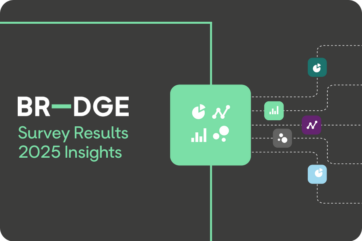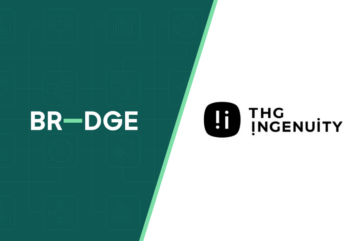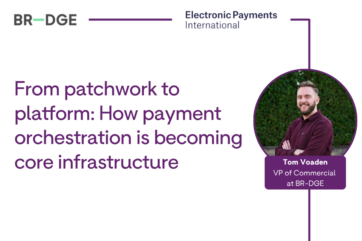
Beyond the buzzword: How to tell if your orchestrator is the real deal

There's no more debate about whether enterprise merchants need orchestration. That question's been answered—decisively. What's less clear is who's genuinely built to deliver it. The conversation around orchestration has grown louder for a reason. Enterprise merchants that have deployed it are seeing massive uplifts in authorization and approval rates, resilience improvements, and the freedom to pick and mix the services they want.
Having proven that it is fixing long-standing structural problems in payments, orchestration is everywhere now, and everyone wants to offer it. Many say they already do. But when the label gets applied to everything from a multi-acquirer gateway to a dashboard with some logic routing, the real thing risks getting lost in the noise.
That's the challenge facing merchants and PSPs today: learning how to see through the marketing and spot the providers who've architected their platforms for flexibility, control and scale from day one.
Orchestration as infrastructure, not interface
Payments orchestration has become shorthand for flexibility, the ability to plug in new acquirers, add payment methods, reroute transactions on the fly, and get clear performance data across the board.
But let's be clear: not all "orchestration platforms" deliver that. Some are glorified gateways. Others lock you into specific integrations or partners, despite the promises of flexibility.
What you really need is infrastructure-level control, the kind that lets you adapt without friction, decouples pay-ins and payouts where you need to, enables business logic to be applied in real time, and allows new services to be switched on—not coded in—as your strategy evolves.
There is growing demand from merchants who've been burned by packaged platforms and want to regain control through modular layers. If that flexibility and modularity isn't there, no amount of interface polish will save you when it's time to scale, shift or diversify.
The hidden costs of inflexibility: why this distinction matters now
Enterprise merchants are increasingly sophisticated. They've already weathered multiple infrastructure overhauls, scaled across geographies and built out nuanced checkout flows. They're outgrowing their old, single-purpose tools; they need tools that work together, flexibly and fast. But many providers still sell partial solutions under the banner of orchestration. It's no longer enough to claim dynamic routing or comprehensive connectivity. The real test is whether your platform gives you the control—without tying your hands every time you want to change direction.
The cost of getting it wrong? Wasted resources. Longer time-to-market. Delayed monetisation. Higher failure rates. Customer churn. And teams that are constantly reacting, instead of optimising and innovating.
Meanwhile, orchestration done right flips the script. One integration unlocks an ecosystem of partners. Business logic can be adjusted without developer bottlenecks. Routing, resilience, connectivity and data insights can be accessed through one central layer, giving merchants the visibility and agility they've been missing.
This isn't just useful for high-volume ecommerce, gaming and travel brands that are natural clients for payment orchestration. Increasingly, acquirers and ISVs seek the ability to bring orchestration into their core offering, not as a nice-to-have but as a competitive necessity.
A purpose-built orchestration platform should feel like intuitive, intelligent, infrastructure: always on, easily extended and robust under pressure.
What to watch for in an orchestration partner
If a platform pitches orchestration, test how deep that promise really goes. Ask:
- Can we apply layered, programmable business logic to routing decisions and modify it without touching the core platform?
- Does the platform support native scheme tokenisation, or does it rely on third-party wrappers that increase latency?
- Can we deploy orchestration across all channels, including MO/TO, marketplace and payout use cases?
- How does the system handle anomaly detection, alerting and automated recovery during provider outages?
- Is reporting actionable and complete, covering both financial and technical performance?
- Can the platform handle volume spikes and unexpected transaction patterns?
If the answer to any of these raises an eyebrow, keep walking. If everything needs to be prescribed up front, it's not orchestration; it's just managed services by another name. If routing rules are limited to static configurations, businesses will be hamstrung by lack of choice and conversion rates will suffer. If you can't test and deploy new flows safely and autonomously in a sandbox or staging environment, you're flying blind.
And right now, with so many payment and system outages occurring, merchants and PSPs need infrastructure that's built for volatility, optionality and change.
Orchestration: The strategic layer that separates winners and losers
We're entering a new era. We've moved past the "why orchestration?" phase. Now the question is, what kind of orchestration platform do you want shaping your growth? Don't think of orchestration as yet another bolt-on. It goes far beyond that, working as a control layer for everything that matters in modern payments: revenue performance, customer experience, compliance and operational efficiency.
The right partner will give you speed, scale, visibility and optionality via a modular solution. That way you can tackle your payments challenges in line with your priorities. The wrong choice of provider will slow you down, lock you in and make every strategic shift a negotiation. And choosing a poor orchestrator could become a painful liability for your business.
Of course, choosing the right orchestration platform means looking for the right blend of tech features and expertise for your business. But you also need your business model to be ready for whatever future innovations arise and be able to adapt to them instantly.
Click here to read the full article on The Green Sheet Online Edition page.
Related content





